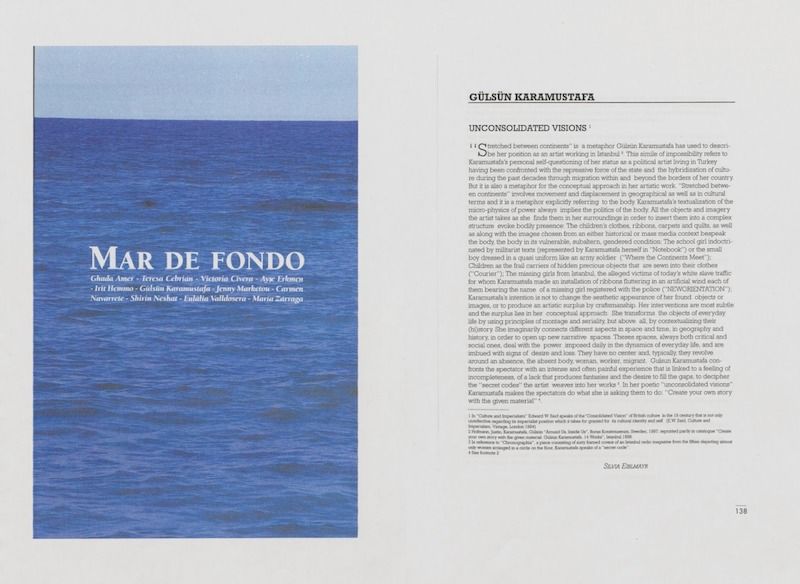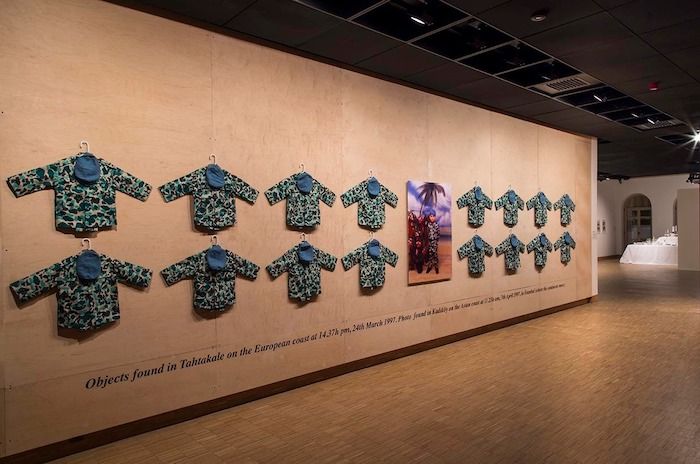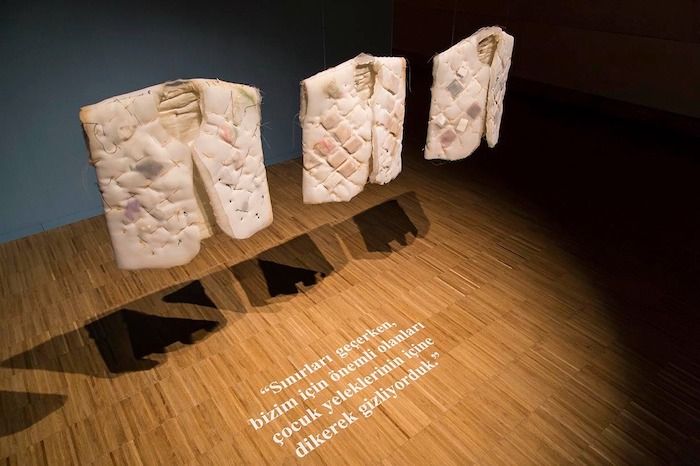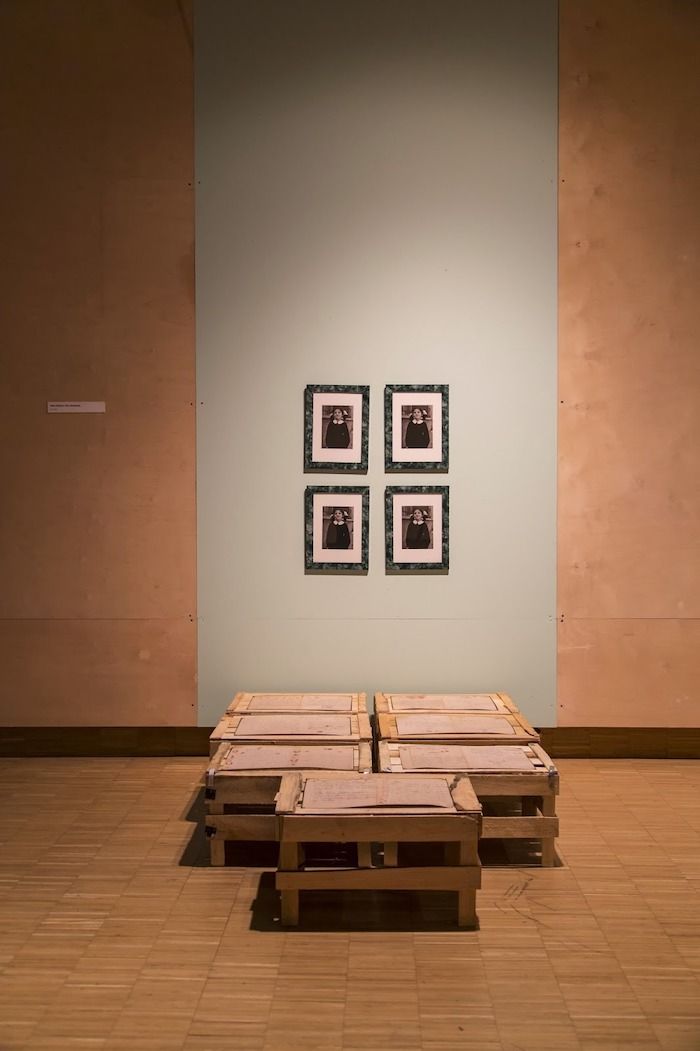Unconsolidated Visions
SILVIA EIBLMAYR
5 Kasım 2013

“Stretched between continents” is a metaphor Gülsün Karamustafa has used to describe her position as an artist working in Istanbul.1 This simile of impossibility refers to Karamustafa’s personal self-questioning of her status as a political artist living in Turkey, having been confronted with the repressive force of the state and the hybridization of culture during the past decades through migration within and beyond the borders of her country. But it is also a metaphor for the conceptual approach in her artistic work. “Stretched between continents” involves movement and displacement in geographical as well as in cultural terms and it is a metaphor explicitly referring to the body. Karamustafa’s textualization of the micro-physics of power always implies the politics of the body All the objects and imagery the artist takes as she finds them in her surroundings, in order to insert them into a complex structure, evoke bodily presence: The children’s clothes, ribbons, carpets and quilts, as well as along with the images chosen from an either historical or mass media context bespeak the body, the body in its vulnerable, subaltern, gendered condition: The school girl indoctrinated by militarist texts (represented by Karamustafa herself in “Notebook”) or the small boy dressed in a quasi uniform like an army soldier (“Where the Continents Meet”); Children as the frail carriers of hidden precious objects that are sewn into their clothes (“Courier”); The missing girls from Istanbul, the alleged victims of today’s white slave traffic for whom Karamustafa made an installation of ribbons fluttering in an artificial wind each of them bearing the name of a missing girl registered with the police (“NEWORIENTATION”); Karamustafa’s intention is not to change the aesthetic appearance of her found objects or images, or to produce an artistic surplus by craftsmanship.
Her interventions are most subtle and the surplus lies in her conceptual approach: She transforms the objects of everyday life by using principles of montage and seriality, but above all, by contextualizing their (hi)story. She imaginarily connects different aspects in space and time, in geography and history, in order to open up new narrative spaces. These spaces, always both critical and social ones, deal with the power imposed daily in the dynamics of everyday life, and are imbued with signs of desire and loss. They have no center and, typically, they revolve around an absence, the absent body, woman, worker, migrant. Gülsün Karamustafa confronts the spectator with an intense and often painful experience that is linked to a feeling of incompleteness, of a lack that produces fantasies and the desire to fill the gaps, to decipher the “secret codes” the artist weaves into her works.2 In her poetic “unconsolidated visions” Karamustafa makes the spectators do what she is asking them to do: “Create your own story with the given material.”3



From the text titled “Unconsolidated Visions”4 by Silvia Eiblmayr for the catalogue of Mar de Fondo (1998) exhibition, p. 138.
Her interventions are most subtle and the surplus lies in her conceptual approach: She transforms the objects of everyday life by using principles of montage and seriality, but above all, by contextualizing their (hi)story. She imaginarily connects different aspects in space and time, in geography and history, in order to open up new narrative spaces. These spaces, always both critical and social ones, deal with the power imposed daily in the dynamics of everyday life, and are imbued with signs of desire and loss. They have no center and, typically, they revolve around an absence, the absent body, woman, worker, migrant. Gülsün Karamustafa confronts the spectator with an intense and often painful experience that is linked to a feeling of incompleteness, of a lack that produces fantasies and the desire to fill the gaps, to decipher the “secret codes” the artist weaves into her works.2 In her poetic “unconsolidated visions” Karamustafa makes the spectators do what she is asking them to do: “Create your own story with the given material.”3

Where the Continents Meet (1997), installation view from SALT Beyoğlu, photo by Cem Berk Ekinil

Courier (1991), installation view from SALT Beyoğlu, photo by Cem Berk Ekinil

Notebook (1993), installation view from SALT Beyoğlu, photo by Cem Berk Ekinil
From the text titled “Unconsolidated Visions”4 by Silvia Eiblmayr for the catalogue of Mar de Fondo (1998) exhibition, p. 138.
- 1.Hoftnann, Justin. Karamustafa. Gülsün "Around Us. Inside Us", Boras Konsttnuseum. Sweden, 1997. reprinted partly in catalogue "Create your own story with the given material Gülsün Karamustafa. 14 Works". Istanbul 1998
- 2.In reference to "Chronographia", a piece consisting of sixty framed covers of an Istanbul radio magazine from the fifties depicting almost only women arranged in a circle on the floor Karamustafa speaks of a "secret code"
- 3.See footnote 2
- 4.In "Culture and Imperialism' Edward W. Said speaks of the'Consolidated Vision" of British culture in the 19th century that is not only unreflective regarding its imperialist position which it takes for granted for its cultural identity and self (E.W. Said, Culture and Imperialism. Vintage. London 1994

